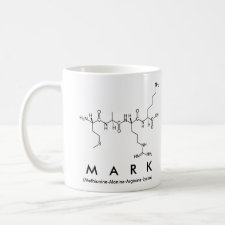
Authors: Noss KR, Vaughan AD, Byrne ME
Article Title: Tailored binding and transport parameters of molecularly imprinted films via macromolecular structure: The rational design of recognitive polymers.
Publication date: 2008
Journal: Journal of Applied Polymer Science
Volume: 107
Issue: (6)
Page numbers: 3435-3441.
DOI: 10.1002/app.27308
Abstract: Testosterone recognitive networks were synthesized varying feed crosslinking percentage and length of bifunctional crosslinking agent to analyze the effect of manipulating structural parameters on template binding parameters such as affinity, capacity, selectivity, and transport. Crosslinking agent was varied from 50 to 90% and associated networks experienced a twofold increase in capacity and a fourfold increase in affinity, with equilibrium association constants ranging from 0.30 ± 0.02 × 104 M-1 to 1.3 ± 0.1 × 104 M-1, respectively. The higher concentration of crosslinking monomer increased crosslinking points available for interchain stabilization creating an increased number of stable cavities for template association. However, by increasing the length of crosslinking agent ≈ 4.5 times, the mesh size of the network increased resulting in 40% faster template diffusional transport. A 77% crosslinked poly(MAA-co-PEG200DMA) recognitive network had an association constant of (0.20 ± 0.05) × 104 M-1 and bound (0.72 ± 0.04) × 10-2 mmol testosterone/g dry polymer which was less by six and threefold, respectively, compared to a similarly crosslinked poly(MAA-co-EGDMA) recognitive network. Structural manipulation of the macromolecular architecture illustrates the programmability of recognitive networks for specific binding parameters and diffusional transport, which may lead to enhanced imprinted sensor materials and successful integration onto sensor platforms. © 2007 Wiley Periodicals, Inc. J Appl Polym Sci, 2008
Author keywords: molecular imprinting, recognitive polymer, microsensor, micropatterning, microdevice



Join the Society for Molecular Imprinting

New items RSS feed
Sign-up for e-mail updates:
Choose between receiving an occasional newsletter or more frequent e-mail alerts.
Click here to go to the sign-up page.
Is your name elemental or peptidic? Enter your name and find out by clicking either of the buttons below!
Other products you may like:
 MIPdatabase
MIPdatabase









